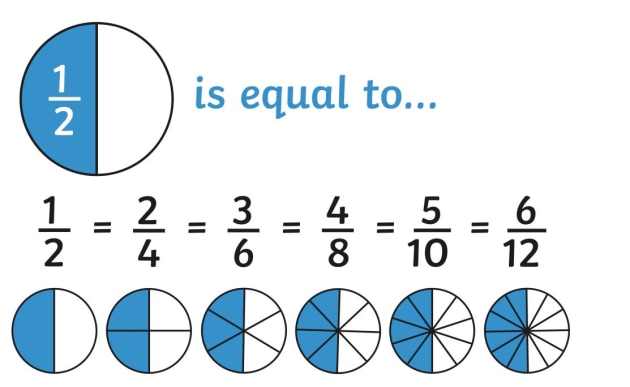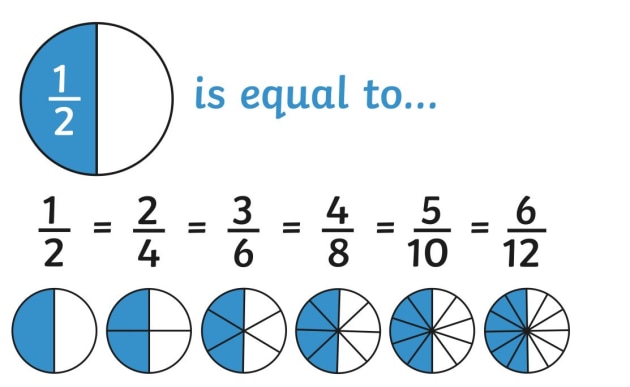Fractions
A fraction is a small portion of a larger entity. 'Denominator' refers to how many equal portions are split up in the total. 'The numerator tells us how many pieces we're taking. Example: "2 of 4 equal portions" is represented by 2/4. This equation has three digits as the numerator and four digits as the denominator
Example of fraction:
Parts of a complete thing are described using fractions. When a pizza is split into four pieces, each piece represents a quarter of the pizza. Suppose the pizza is divided among 4 people. Each person would receive a ¼ portion of pizza. It means each person will get one piece out of four pieces. The numerator, in this case, is one, while the denominator is four.

How fractions came into existence?
It is not always possible for all measured quantities to be absolute whole numbers in real life. We may have to manage with sections and fractions of entire objects, which introduces the notion of fractions.
Various Fractional Forms
The ratio of two numbers or when two numbers are divided is termed as a fraction. The numerator is the larger number, while the denominator is the smaller number. When a whole is subdivided into a certain number of pieces, each component is referred to as a fraction. Fractions could be proper and improper
Proper fractions
Proper fractions have a numerator that is less than their denominator. 3/4, 2/11, and 7/19 are all proper fractions.
Improper fraction
An improper fraction has a numerator that is equal to or larger than the denominator. Improper fractions include 7/2, 18/5, and 23/11.
Mixed number
A mixed number consists of both whole numbers and fractions. All of these numbers are mixed: 3 2/3, 8 5/4, and 2 2/5.
Which fractions are available?
Fractions are classified into three basic types:
Proper fraction
Improper fraction
Mixed fraction
How are other types of fractions?
Proper fractions, improper fractions, mixed fractions, similar fractions, unlike fractions, and comparable fractions are the six types of fractions.
What is the definition of an acceptable proper fraction?
Proper fractions have a numerator value that is smaller than the denominator value. Examples include 2/3, 6/7, 8/9, etc., all of which are proper fractions.
With an illustration, describe improper fractions.
A fraction is improper if the numerator exceeds the denominator. 13/5, 16/3, 7/2, and 19/7 are other instances.
How to transform an improper fraction into a mixed number
An improper fraction can be transformed into a mixed number by dividing the numerator by the denominator. The residual will be the numerator of the new fraction, while the outcome becomes the whole number. The new fraction's denominator equals the denominator of the old fraction. If no residual exists, no fraction exists; the result is just a full integer. e.g.
E.g.
Convert 23/4 into a mixed fraction.
Initially, you will have to divide the numerator, that is, 23 by the denominator 4. Let us do it: 23 ÷ 4 = 5.
Here, 5 is referred to as the quotient, and 3 is referred to as the remainder.
So we have the same denominator 4 and the remainder 3 as the numerator.
So, 23/4 converted has been converted into a mixed fraction, which is 5¾
Conversion of Mixed to Improper Fraction
Multiply the entire integer by the denominator. Then add it to the numerator. This would convert a mixed number to an improper fraction.


